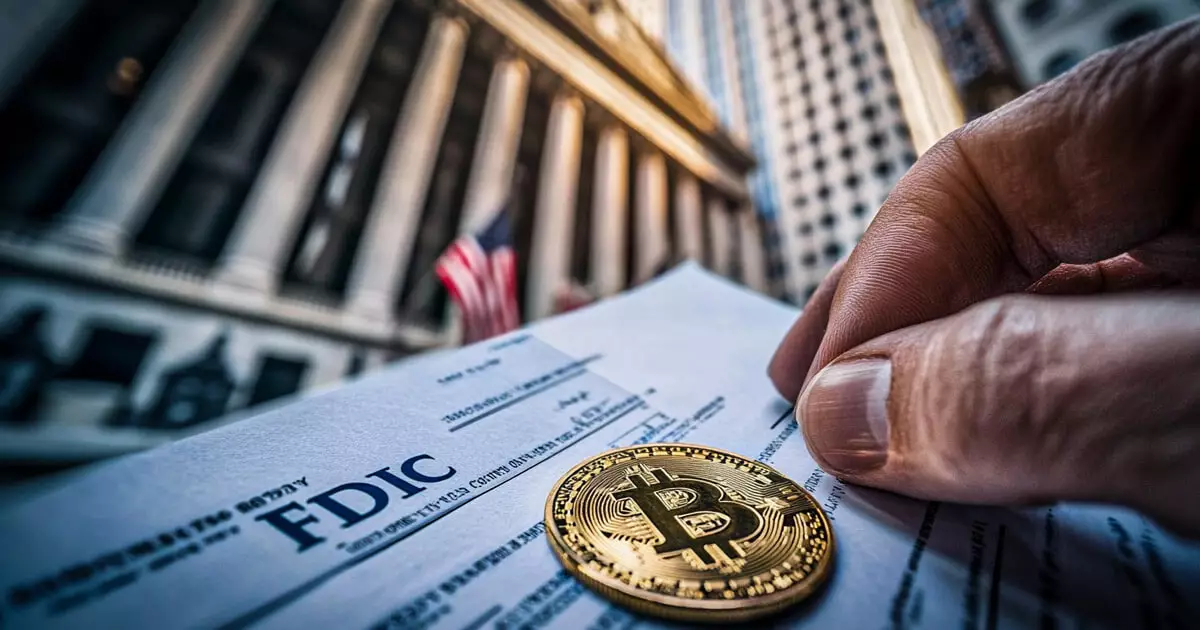In a significant move indicating the changing dynamics within the banking industry, the Federal Deposit Insurance Corporation (FDIC) is preparing to overhaul its guidelines concerning banks involved in cryptocurrency activities. This comes as a response to an evolving digital asset landscape, where financial institutions are seeking ways to engage with emerging technologies. The FDIC’s decision, reported on February 5, highlights a growing inclination to embrace financial innovation, yet questions remain about the implications of this shift for banking practices and consumer protection.
New Guidelines for Crypto-Related Activities
The FDIC’s forthcoming guideline revisions are particularly noteworthy because they would permit banks to conduct specified crypto-related activities without the need for prior regulatory approval. This marks a departure from previous practices where formal permission was a prerequisite for such engagements. By facilitating banks’ participation in crypto custody services and exploring tokenized deposits—potential alternatives to traditional stablecoins—the FDIC appears to be acknowledging the necessity of integrating modern technologies into established banking frameworks.
Tokenized deposits, for instance, represent an innovative merger of checking accounts and blockchain technology, showcasing a potential pathway for enhancing liquidity and operational efficiency in digital banking. Such initiatives could signify a paradigm shift, enabling banks to adapt more readily to the demands of a digital-first economy.
Adding to the conversation, the FDIC recently released 175 documents detailing its oversight activities related to banks engaging in cryptocurrency services. This information unveiling corresponds with a commitment to transparency, according to FDIC acting chairman Travis Hill. It also reflects the agency’s attempts to adhere to a Freedom of Information Act (FOIA) request filed by Coinbase, which sought clarifications about operational restrictions imposed on crypto-friendly banks.
These documents serve as a critical insight into the FDIC’s regulatory posture and the challenges facing banks in the crypto sphere. Historically, numerous financial institutions faced setbacks due to the FDIC’s “pause letters,” which advised them to cease crypto-related operations whenever perceived risks emerged. Hill’s assessments of these documents reveal a broader message: banks encountered considerable resistance from the FDIC, leading to a cautious approach towards engaging in crypto services.
The Struggle for Compliance and Innovation
According to Coinbase’s chief legal officer Paul Grewal, the FDIC’s tactics have often pressured banks into abandoning their crypto endeavors. He describes a process termed “regulation by exhaustion,” where banks are inundated with requests for clarifications and information, ultimately leading to a discouraging environment that deters further exploration into innovative services. This strategy raises concerns about the FDIC’s role in fostering a supportive regulatory landscape for technological advancements in banking.
The documents released also underscore the FDIC’s apprehensions regarding the volatility of cryptocurrencies and the associated reputational risks. With multiple instances reflecting the internal concerns of the FDIC, it appears that there is a tangible tension between the advancement of crypto services and the pursuit of consumer protection goals.
Industry leaders, such as Caitlin Long, founder and CEO of Custodia Bank, have voiced concerns over the FDIC’s hesitance to fully embrace digital asset integration. Long’s analysis of internal communications suggests a clear message from regulators urging banks to distance themselves from accepting deposits tied to cryptocurrencies. This sentiment begs the question: is the banking industry prepared to embrace necessary innovations, or will regulatory constraints hinder progress?
As financial institutions navigate this complex regulatory environment, it is crucial that they advocate for a balanced approach—one that prioritizes innovation while ensuring consumer safety and market stability. Positive regulatory changes could pave the way for a more robust integration of cryptocurrency into traditional banking, fostering a progressive financial landscape.
The FDIC’s anticipated revisions could be a watershed moment for banks aiming to expand their crypto-service portfolios. However, this shift comes with its own set of challenges, particularly regarding consumer protection and institutional risk management. As banks weigh the benefits of engaging with digital assets against regulatory pressures, the industry’s ability to adapt to these evolving guidelines will ultimately define the future landscape of finance. The coming months could prove pivotal as stakeholders strive for a balance between innovation and compliance in a rapidly changing financial ecosystem.

